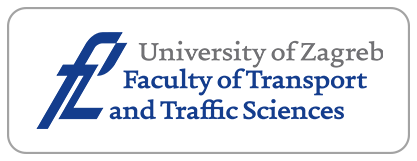Two-Stage Greener Four-Dimensional Trajectory Optimisation with Combined Holding Strategies

Downloads
The rapid growth of air transport demand poses challenges to the development of the global air traffic system, including increased delays and environmental pollution. To alleviate these problems, a two-stage greener 4D trajectory optimisation framework is proposed by integrating air traffic flow management (ATFM) with the trajectory-based operations (TBO). In the first stage, a multi-objective optimisation model is developed for network-wide delay management to minimise delay costs and CO2 emissions. The combination of ground holding, standard airborne holding and economic airborne holding is adopted to control the controlled time of arrival (CTA) at each critical node along the trajectory. In the second stage, the 4D trajectory optimisation method is conducted based on the CTA constraints of the negotiated solution from the first stage to generate specific “runway-to-runway” 4D trajectory for the individual flight. The method is tested on the Shanghai-Beijing-Guangzhou air traffic network. Results indicate that including the economic airborne holding provides a more flexible trade-off between delay costs and CO2 emissions, facilitating stakeholder negotiations. Specifically, a 1% increase in delay cost can lead to a reduction in CO2 emissions by approximately 0.51%. The proposed method presents a promising solution for achieving greener and more precise ATFM within the TBO paradigm.
Downloads
Tan X, et al. An exploratory analysis of flight delay propagation in China. Journal of Air Transport Management. 2021, 92:102025. DOI: 10.1016/j.jairtraman.2021.102025.
ICAO. 2019 Environmental report: Aviation and environment. Montréal: International Civil Aviation Organization, 2019.
Odoni AR. The flow management problem in air traffic control. Flow control of congested networks 1987;p.269-288). Berlin, Heidelberg: Springer Berlin Heidelberg.
Ng KK, Lee CK. Aircraft scheduling considering discrete airborne delay and holding pattern in the near terminal area. Intelligent Computing Theories and Application: 13th International Conference, ICIC 2017, 7-10 Aug. 2017, Liverpool, UK. p. 567-576. DOI: 10.1007/978-3-319-63309-1_50.
Agustı A, Alonso-Ayuso A, Escudero LF, Pizarro C. On air traffic flow management with rerouting. Part II: Stochastic case. European Journal of Operational Research. 2012;219(1):167-77.
Huo Y, Delahaye D, Sbihi M. A dynamic control method for extended arrival management using enroute speed adjustment and route change strategy. Transportation research part C: emerging technologies. 2023;149:104064.
Kopardekar P, Green S, Aston J, Roherty T. Miles-in-Trail (MIT): A Perspective. AIAA's 3rd Annual Aviation Technology, Integration, and Operations (ATIO) Forum 2003. p. 6700. DOI: 10.2514/6.2003-6700.
Ny JL, Pappas GJ. Joint metering and conflict resolution in air traffic control. Journal of Guidance, Control, and Dynamics. 2011;34(5):1507-18. DOI: 10.2514/1.53253.
Bertsimas D, Patterson SS. The air traffic flow management problem with enroute capacities. Operations research. 1998;46(3):406-22. DOI: 10.1287/opre.46.3.406.
Hamdan S, et al. Optimal air traffic flow management with carbon emissions considerations. World Congress on Global Optimization, 15 Jun. 2019. p. 1078-1088. DOI: 10.1007/978-3-030-21803-4_106.
Kistan T, et al. An evolutionary outlook of air traffic flow management techniques. Progress in aerospace sciences. 2017;88:15-42. DOI: 10.1016/j.paerosci.2016.10.001.
Sandamali GG, Su R, Sudheera KL, Zhang Y. A safety-aware real-time air traffic flow management model under demand and capacity uncertainties. IEEE Transactions on Intelligent Transportation Systems. 2021;23(7):8615.
Diao X, Lu S. Optimization approach to data-driven air traffic flow management. Transportation Research Record. 2022;2676(3):398-404. DOI: 10.1177/0361198121105162.
Gui G, et al. Machine learning aided air traffic flow analysis based on aviation big data. IEEE Transactions on Vehicular Technology. 2020;69(5):4817-26. DOI: 10.1109/TVT.2020.2981959.
Corrigan S, et al. Preparing for airport collaborative decision making (A-CDM) implementation: An evaluation and recommendations. Cognition, Technology & Work. 2015;17:207-18. DOI: 10.1007/s10111-014-0295-x.
Dal Sasso V, Fomeni FD, Lulli G, Zografos KG. Incorporating Stakeholders’ priorities and preferences in 4D trajectory optimization. Transportation Research Part B: Methodological. 2018;1(117):594-609. DOI: 10.1016/j.trb.2018.09.009.
Xu Y, Prats X, Delahaye D. Synchronised demand-capacity balancing in collaborative air traffic flow management. Transportation Research Part C: Emerging Technologies. 2020;1(114):359-76. DOI: 10.1016/j.trc.2020.02.007.
Tan DY, Badrinath S, Balakrishnan H. Analysis and design of trajectory-based operations under wind forecast uncertainty. CEAS Aeronautical Journal. 2021;6:1-2. DOI: 10.1007/s13272-021-00501-1.
Diao X, Chen CH. A sequence model for air traffic flow management rerouting problem. Transportation Research Part E: Logistics and Transportation Review. 2018;110:15-30. DOI: 10.1016/j.tre.2017.12.002.
Xu Y, et al. A framework for collaborative air traffic flow management minimizing costs for airspace users: Enabling trajectory options and flexible pre-tactical delay management. Transportation Research Part B: Methodological. 2020;134:229-55. DOI: 10.1016/j.trb.2020.02.012.
Chen Y, et al. A 4D-trajectory planning method based on hybrid optimization strategy for demand and capacity balancing. 2021 IEEE/AIAA 40th Digital Avionics Systems Conference (DASC), Oct. 3, 2021. p. 1-9.
Zhou J, et al. Multiobjective four-dimensional trajectory synergetic optimization based on congestion prediction and NSGA3-SA. IEEE Access. 2022;10:71986-2005.
Hamdan S, et al. An environmental air traffic flow management model. 2019 8th International Conference on Modeling Simulation and Applied Optimization (ICMSAO), Apr. 15, 2019. p. 1-5.
Xu Y. Cost-based linear holding practice and collaborative air traffic flow management under trajectory based operations. PhD thesis. Universitat Politècnica de Catalunya; 2018. DOI: 10.5821/dissertation-2117-125313.
Delgado L, Prats X. En route speed reduction concept for absorbing air traffic flow management delays. Journal of Aircraft. 2012;49(1):214-24. DOI: 10.2514/1.C031484.
Liu F, et al. Predicting fuel consumption reduction potentials based on 4D trajectory optimization with heterogeneous constraints. Sustainability. 2021;13(13):7043. DOI: 10.3390/su13137043.
Copyright (c) 2025 Lei YANG, Yi ZHOU, Zihong LI, Hua XIE

This work is licensed under a Creative Commons Attribution-NonCommercial 4.0 International License.




















